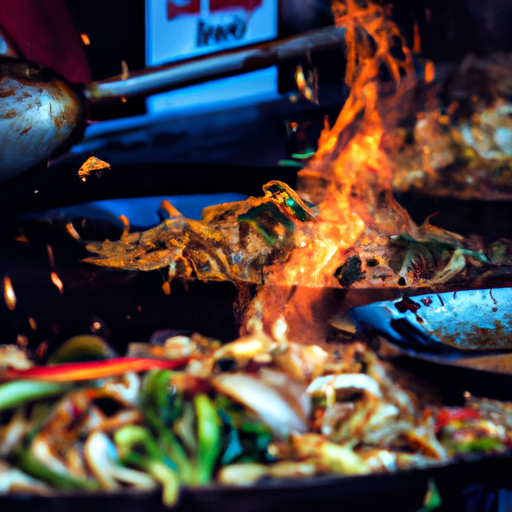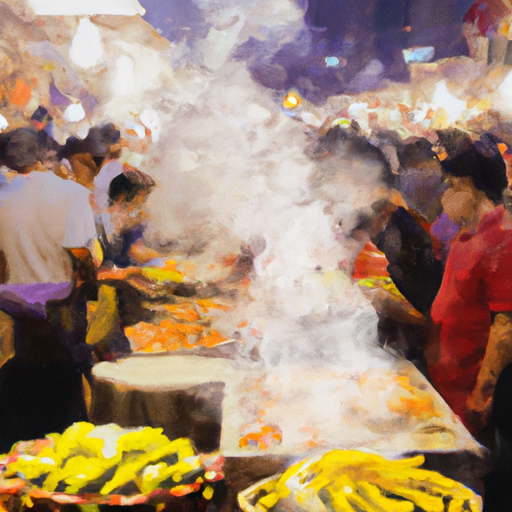Embark on a mouthwatering exploration of Southeast Asia's most vibrant night markets and street food scenes. Discover hidden culinary gems from Bangkok's bustling streets to Penang's historic hawker stalls. Learn insider tips for finding the best local delicacies and navigating the dynamic world of street cuisine.

Southeast Asia's night markets are more than just places to eat; they're living museums of culinary tradition, social hubs where communities gather, and windows into the soul of each city. From the smoky grills of Bangkok's Chinatown to the historic hawker centers of Singapore, these vibrant food scenes offer some of the most authentic and delicious experiences a traveler can have. Let's dive deep into this flavorful world.
Bangkok: The Street Food Capital
Bangkok's street food scene is legendary, with good reason. The city's Yaowarat Road (Chinatown) comes alive after sunset, with hundreds of vendors serving everything from seafood to traditional Thai desserts. Don't miss the famous pad thai at Thipsamai, where they wrap the noodles in a thin egg omelet, or the succulent grilled prawns at T & K Seafood. The key is to look for stalls with long local queues - they're usually the best.
Navigating Penang's Heritage
George Town, Penang, offers a unique blend of Malay, Chinese, and Indian influences in its street food. Gurney Drive Hawker Centre and New Lane Food Court are must-visit destinations. The char kway teow, fried flat noodles with prawns and cockles, is a local specialty that every vendor puts their own spin on. Don't leave without trying asam laksa, a tangy fish-based noodle soup that's unlike anything else in Southeast Asia.
Singapore's Hawker Culture
Singapore has elevated street food to an art form, with its carefully regulated hawker centers offering incredible value and variety. The famous chicken rice at Maxwell Food Centre, the satay at Lau Pa Sat, and the chili crab at East Coast Lagoon Food Village showcase the city-state's dedication to preserving its food heritage while maintaining high hygiene standards.
Safety and Etiquette Tips
While street food is generally safe, it's wise to observe some basic precautions. Look for stalls with high turnover and food that's cooked fresh to order. Avoid raw vegetables unless you're sure they've been properly cleaned. Carry small change as many vendors don't accept cards, and learn basic local phrases to order more effectively.
Hanoi's Old Quarter Delights
Hanoi's street food scene is characterized by tiny plastic stools, steaming bowls of pho, and the sound of sizzling grills. The Old Quarter is particularly famous for bun cha - grilled pork with noodles and herbs. Early mornings bring vendors selling banh mi, while evenings are perfect for exploring the weekend night market on Hang Dao Street.
Ho Chi Minh City's Dynamic Scene
Saigon's Ben Thanh Market transforms at night, with food stalls setting up around its perimeter. The seafood here is exceptional, but the real treats are found in the smaller alleyways. Look for com tam (broken rice) with grilled pork, and banh xeo (crispy pancakes) filled with shrimp and bean sprouts.
Kuala Lumpur's Melting Pot
Jalan Alor in Kuala Lumpur exemplifies Malaysia's multicultural heritage. Chinese seafood restaurants spill onto the street alongside Malay satay vendors and Indian roti canai stands. The atmosphere is electric, especially after 6 PM when the street becomes pedestrian-only.
Seasonality and Special Occasions
Many street food specialties are seasonal or tied to specific festivals. During Lunar New Year, look for special dishes like nian gao (rice cakes) in Chinese communities. Ramadan brings special night markets in Muslim areas, with unique treats only available during this period.
Sustainability Concerns
Street food vendors increasingly face challenges from urban development and changing consumer habits. Many cities are working to preserve their street food heritage while addressing environmental concerns. Some vendors now use biodegradable packaging, and there's a growing movement to reduce food waste.
The Social Aspect
Street food isn't just about eating; it's about community. Sharing tables with strangers, watching skilled vendors at work, and participating in the lively atmosphere are all part of the experience. Many vendors have been operating for generations, passing down secret recipes and techniques.
Photography and Documentation
While photographing street food scenes, always ask permission before taking pictures of vendors or their stalls. Many appreciate the interest but prefer to be asked first. Some may even share stories about their specialties or cooking techniques.
The Future of Street Food
As cities modernize, street food cultures adapt. Some vendors now use social media to attract customers, while others have opened proper restaurants while maintaining their street food roots. The key is finding balance between preservation and progress, ensuring these culinary traditions continue to thrive.



